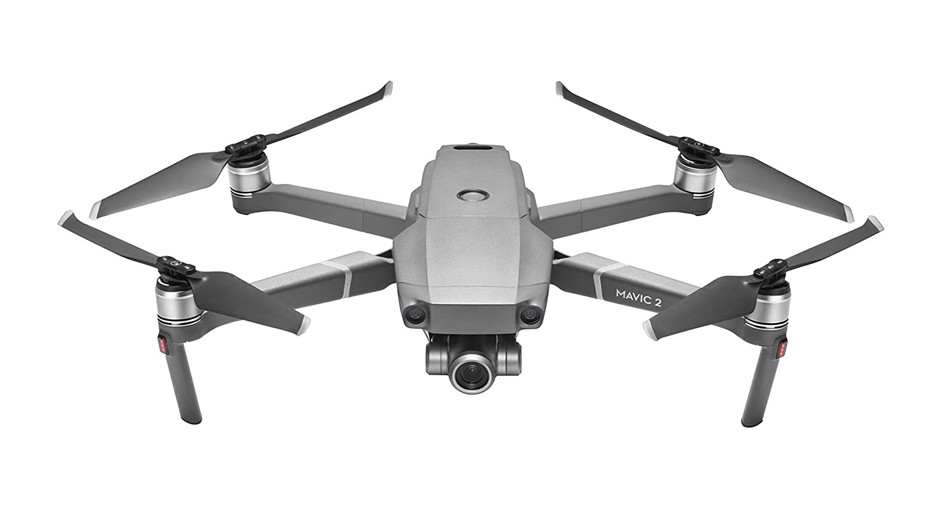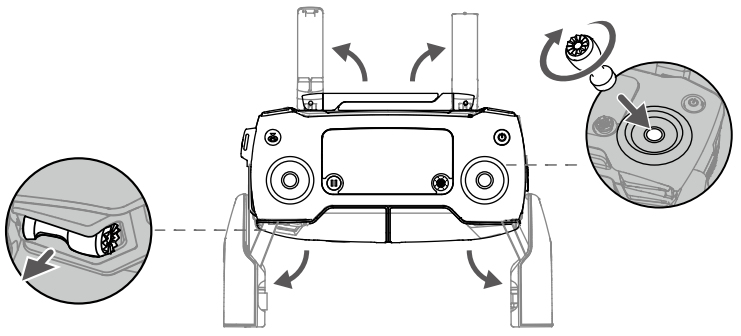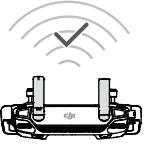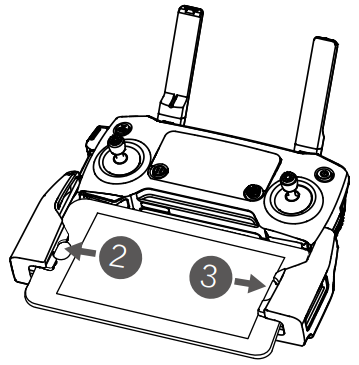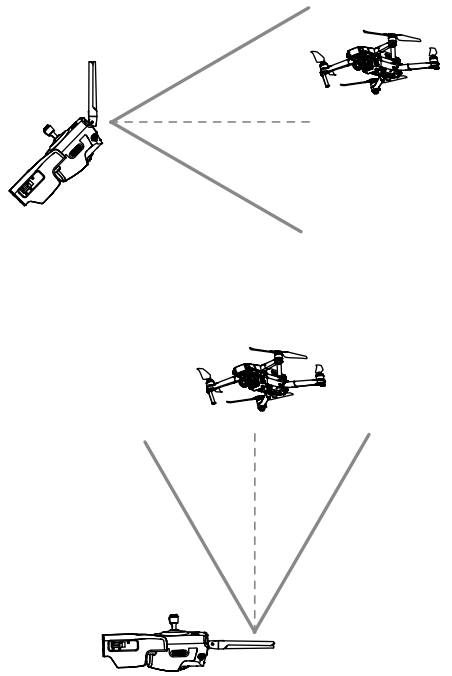
MAVIC 2 ZOOM
Quick Start GuideV1.2
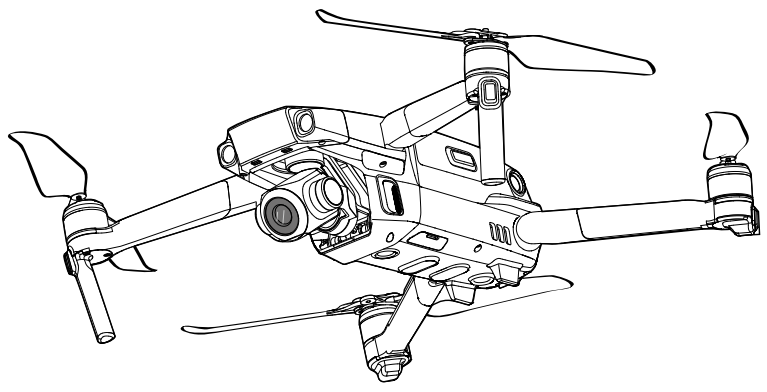
Aircraft
The DJI™ MAVIC™ ‘2 Zoom features omnidirectional Vision Systems and Infrared Sensing Systems*, and comes with a fully stabilized 3-axis gimbal camera with an equivalent 2448 mm 2x optical zoom lens capable of shooting 4K videos and 12-megapixel photos that support up to 4x FHD lossless zoom. DJI signature technologies such as Obstacle Sensing and Intelligent Flight Modes like HyperLapse, ActiveTrackTM 2.0, QuickShot, Panorama, and Advanced Pilot Assistance Systems, help you capture complex shots effortlessly. The Mavic 2 Zoom boasts a maximum flight speed of 44.7 mph (72 kph) and a maximum flight time** of 31 minutes.
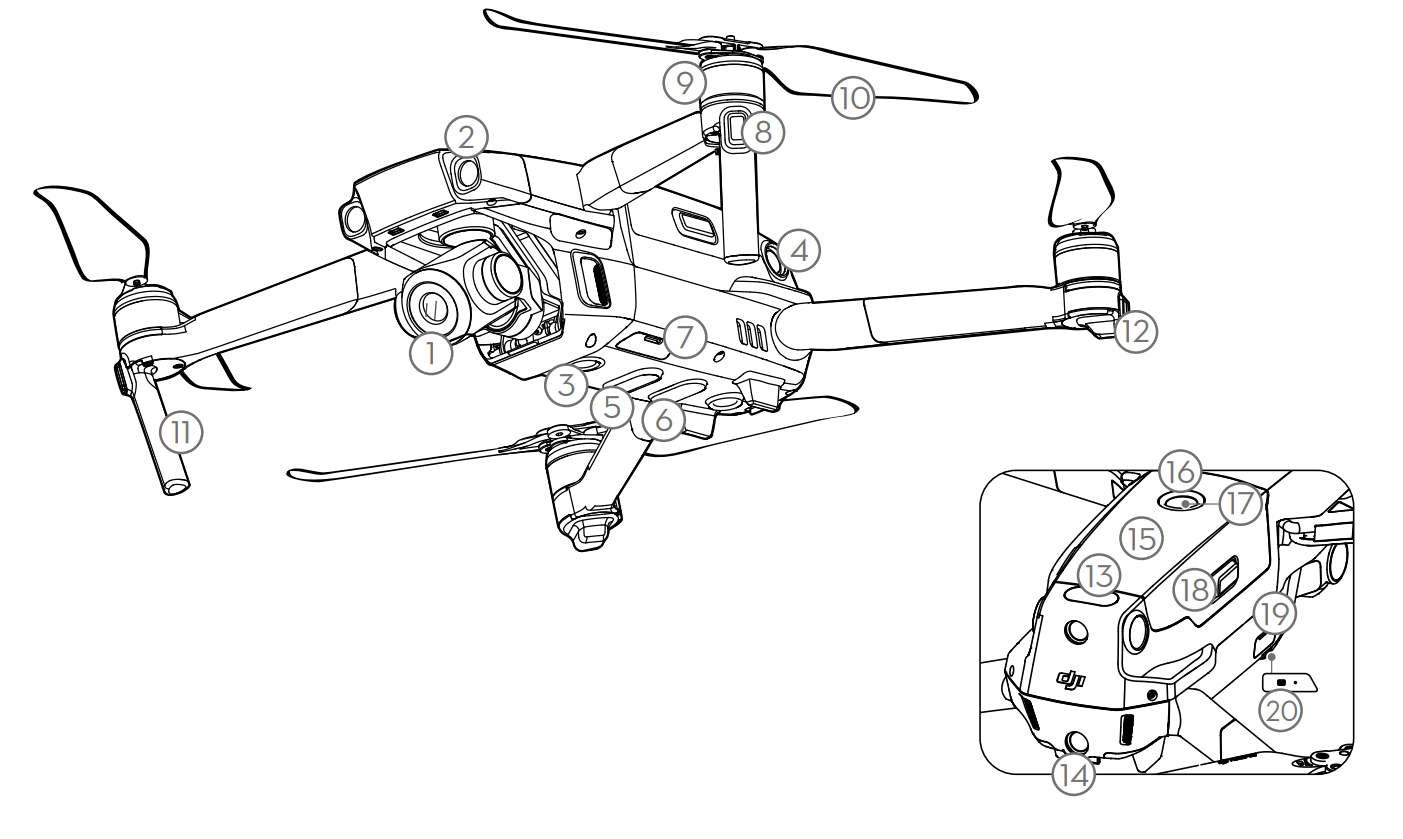
| 1. Gimbal and Camera2. Forward Vision System3. Downward Vision System4. Lateral Vision System5. Downward Infrared SensingSystem6. Auxiliary Bottom Light7. microSD Card Slot8. Front LEDs9. Motors10. Propellers | 11. Antennas12. Aircraft Status Indicator13. Upward Infrared Sensing System14. Backward Vision System15. Intelligent Flight Battery16. Battery Level LEDs17. Power Button18. Battery Buckles19. USB-C Port20. Link Button/Linking Status Indicator |
* The Vision Systems and Infrared Sensing Systems are affected by surrounding conditions. Read the Disclaimer and Safety Guidelines, User Manual, and watch the tutorial videos in the DJI GO™ 4 app or on the official DJI website to learn more. http://www.dji.com/mavic-2** Maximum flight time was tested in an environment with no wind while flying at a consistent 15.5 mph (25 kph). This value is for reference only.
Remote Controller
Built into the remote controller is the DJI’s long-range transmission technology OCUSYNC™ 2.0, offering a maximum transmission range of 5 mi (8 km) and displaying video from the aircraft to the DJI GO 4 app on your mobile device at up to 1080p. An on-board LCD screen gives real-time aircraft data information and the detachable control sticks make the remote controller easier to store.Maximum run time: 2 hours and 15 minutes*
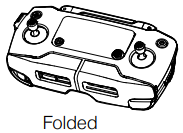 |
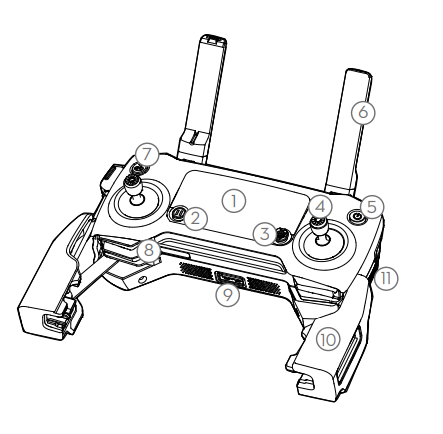 |
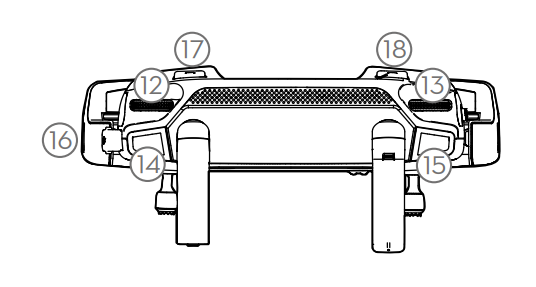 |
| 1. LCD Screen2. Flight Pause Button3. 5D Button4. Removable Control Sticks5. Power Button6. Antennas7. RTH Button8. Control Sticks Storage Slot9. Reserve Video-Downlink Port (USB) | 10. Mobile Device Clamp11. Flight Mode Switch12. Gimbal Dial13. Zoom Adjustment Dial14. Record Button15. Focus/Shutter Button16. Video-Downlink/Power Port (micro USB)17. C1 Button (Customizable)18. C2 Button (Customizable) |
* The remote controller is able to reach its maximum transmission distance (FCC) in a wide-open area with no electromagnetic Interference at an altitude of about 400 ft (120 m).The maximum runtime is tested in a laboratory environment. This value is for reference only.
Download the DJI GO 4 App and Watching Tutorial Videos
Search “DJI GO 4” in the App Store or Google Play or scan the QR code below to download the app on your mobile device.
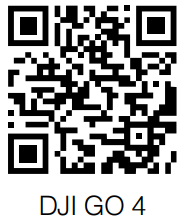
Watch the tutorial videos at www.dji.com/mavic-2/info#video or in DJI GO 4 by tapping the icon in the top right corner of your screen.
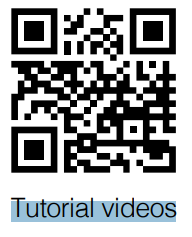
www.dji.com/mavic-2/info#video
![]() DJI GO 4 is compatible with iOS 10.0.2 (or later) or Android 5.0 (or later).
DJI GO 4 is compatible with iOS 10.0.2 (or later) or Android 5.0 (or later).
Preparing the Aircraft
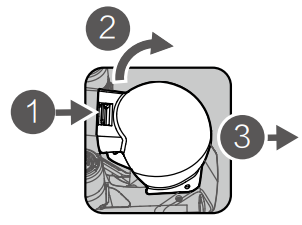
Remove the gimbal cover from the camera. |
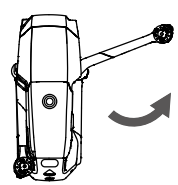
Unfold the front arms. |
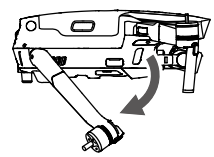
Unfold the rear arms. |
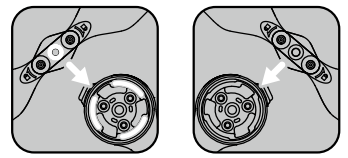
Marked Unmarked |
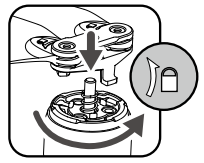
Press the propellers down firmly and rotatein the lock direction. |

Unfolded |
![]() Unfold the front arms and the propellers before the rear ones. All arms and propellers must be unfolded before takeoff.
Unfold the front arms and the propellers before the rear ones. All arms and propellers must be unfolded before takeoff.
Charging the Batteries
Use the provided charger to fully charge the Intelligent Flight Battery before first use
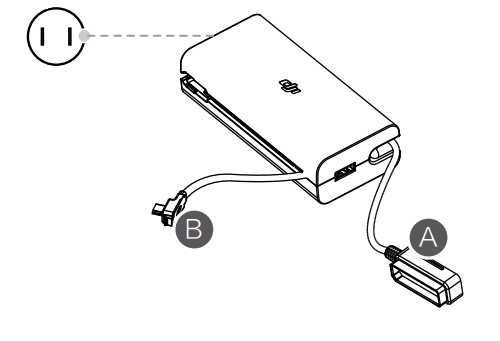 Power Outlet 100 – 240V Power Outlet 100 – 240V |
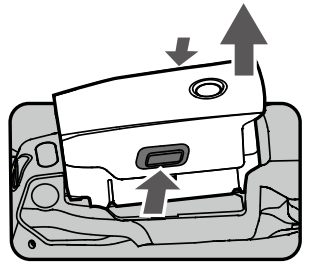
Remove the Intelligent Flight Battery |
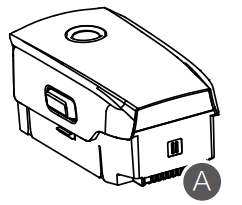
Charging Time: ~1 hour 30 minutes |
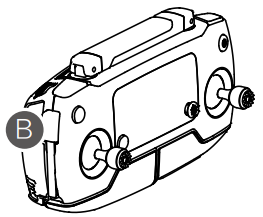
Charging Time: ~2 hours 15 minutes |
![]() Remove the Intelligent Flight Battery
Remove the Intelligent Flight Battery
Checking the Battery Levels and Powering On/Off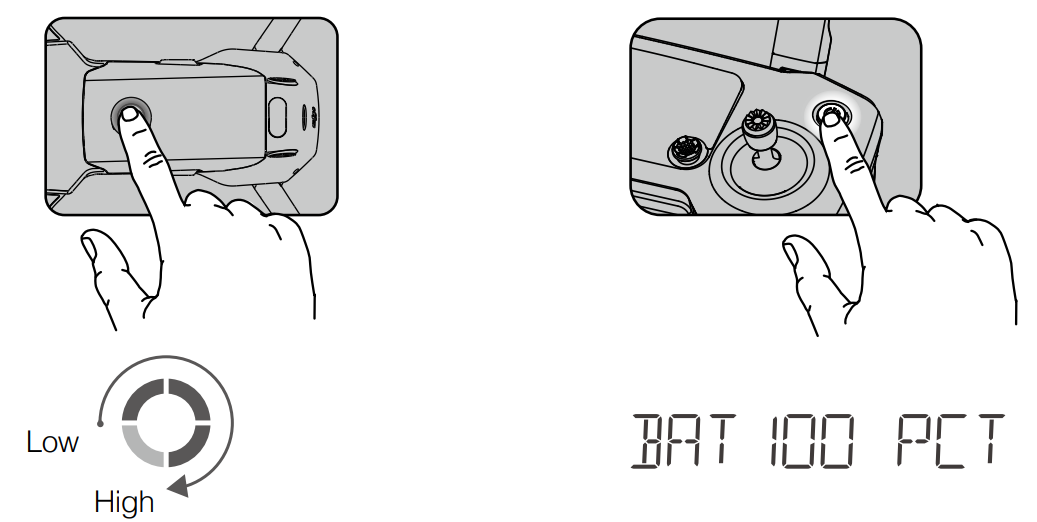
Press once to check the battery level. Press, then press and hold to turn on/off.Press once to check the battery level on the LCD screen.Press once, then press and hold to turn on/ off the remote controller.
Preparing the Remote Controller
|
|
|
|
|
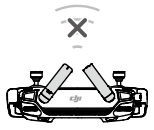
Set the antennas parallel to each other |
|
|
|
![]()
- Ensure the control sticks are firmly mounted.
- The remote controller cable with the Lightning connector is mounted by default. Use the appropriate cable for your mobile device to connect to the remote controller. When using an iPad or tablet, use the USB port on the remote controller.
- Do not use the Micro USB and the USB ports simultaneously for linking video.
Preparing for Takeoff

Power on the remote controller Power on the aircraft Launch DJI GO 4
 Use your DJI account to activate the aircraft. Activation requires an internet connection.
Use your DJI account to activate the aircraft. Activation requires an internet connection.
Internet
Flight
Before taking off, make sure the Aircraft Status Bar in DJI GO 4 displays “Ready to Go”.
- Auto Takeoff / Landing

Auto Takeoff 
Auto Landing - Manual Takeoff / LandingCombination stick command to start/stop the motos

 |
Left stick up (slowly) to take off |
 |
Left stick down (slowly) until you touch the groundHold a few seconds to stop the motors |
![]() The motors can only be stopped mid-flight when the flight controller detects a critical error.
The motors can only be stopped mid-flight when the flight controller detects a critical error.
Remote Controller OperationThe default flight control is known as Mode 2. The left stick controls the aircraft’s altitude and heading, while the right stick controls its forward, backward, left, and right movements. The gimbal dial controls the camera’s tilt.
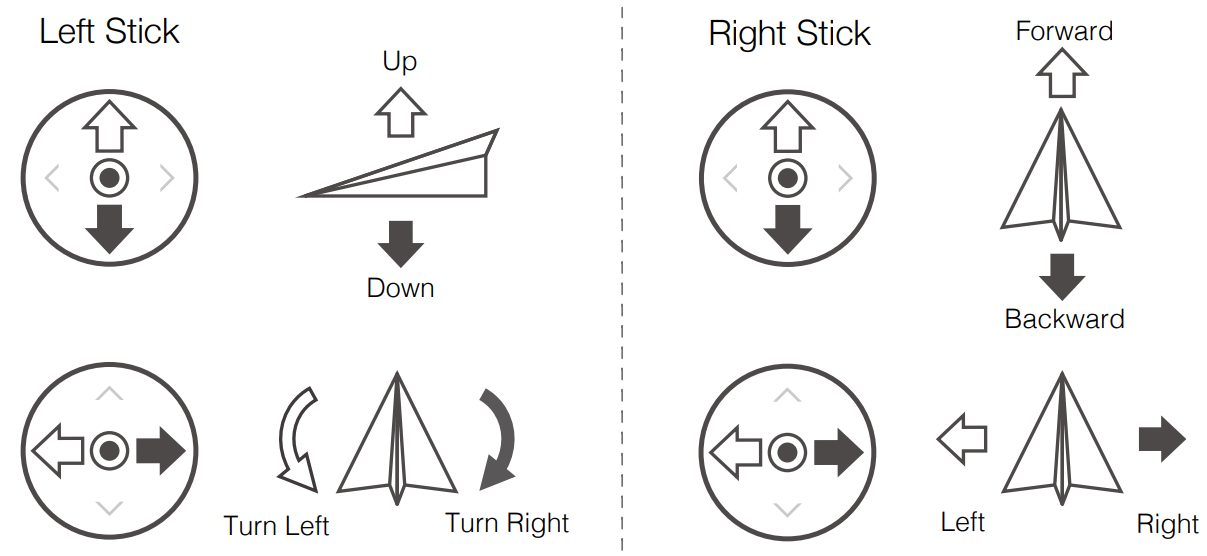
![]() Press the Flight Pause button for emergency braking during flight.
Press the Flight Pause button for emergency braking during flight.
- In DJI GO 4
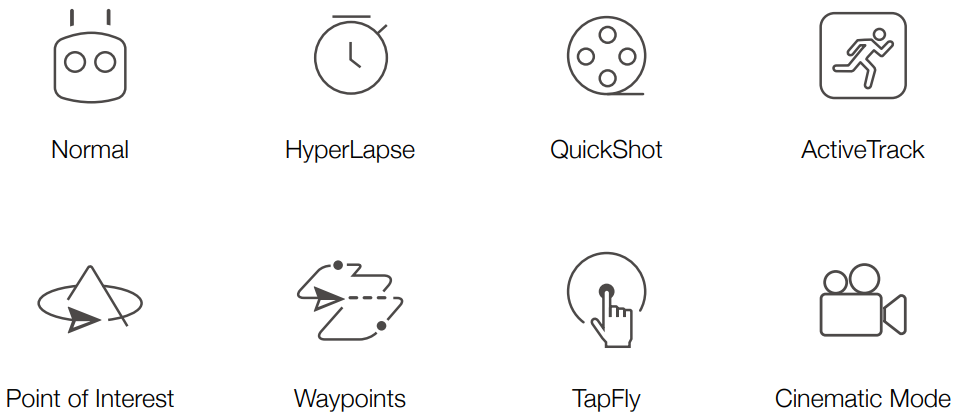
![]()
- Watch the tutorials in DJI GO 4 or at the official DJI website to learn more.
- Always set an appropriate RTH altitude before takeoff. When the aircraft is returning to the Home Point, you should guide it with the control sticks.
Fly Safe


Avoid flying over or near obstacles, crowds, high voltage power lines, trees, or bodies of water.DO NOT fly near strong electromagnetic sources such as power lines and base stations as it may affect the onboard compass.

DO NOT use the aircraft in adverse weather conditions such as rain, snow, fog, and wind speeds exceeding 10 m/s or 22 mph.
 |
Stay away from the rotating propellers and motors. |

No-Fly Zone |
Learn more at: http://flysafe.dji.com/no-fly |
![]() It’s important to understand basic flight guidelines, for the safety of both you and those around you. Don’t forget to read the Disclaimer and Safety Guidelines.
It’s important to understand basic flight guidelines, for the safety of both you and those around you. Don’t forget to read the Disclaimer and Safety Guidelines.
Specifications
| Aircraft | |
| Weight | 905 g |
| Max Speed | 44.7 mph (72 kph) in Sport mode without wind |
| Max Service Ceiling AboveSea Level | 19685 ft (6000 m) |
| Operating Temperature | 14° to 104° F (-10° to 40° C) |
| GNSS | GPS + GLONASS |
| Operating Frequency | 2.4-2.4835 GHz; 5.725-5.850 GHz |
| Transmitter Power | 2.4 GHz |
| (EIRP) | FCC: ≤26 dBm; CE/MIC: ≤20 dBm; SRRC: ≤20 dBm 5.8 GHzFCC: ≤26 dBm; CE: ≤14 dBm; SRRC: ≤26 dBm |
| Gimbal | |
| Controllable Range | Pitch: -90° to +30° |
| Camera | |
| Sensor | 1/2.3″ CMOS; Effective pixels: 12M |
| Lens | FOV: approx. 83° (24 mm), approx. 48° (48 mm) ,35 mm format equivalent: 24-48 mmAperture: f/2.8 (24 mm) – f/3.8 (48 mm)Focus: 0.5 m to ∞ |
| ISO Range | Video: 100-3200 Photo: 100-1600 (auto); 100-3200 (manual) |
| Electronic Shutter Speed | 8-1/8000 s |
| Max Image Size | 4000×3000 |
| Still Photography Modes | Single shotBurst shooting: 3/5/7 framesAuto Exposure Bracketing (AEB): 3/5 bracketed frames at 0.7 EV BiasInterval |
| Video Recording Modes | 4K Ultra HD: 3840×2160 24/25/30p2.7K: 2688×1512 24/25/30/48/50/60pFHD: 1920×1080 24/25/30/48/50/60/120p |
| Video Storage Bitrate | 100 Mbps |
| Photo | JPEG, DNG (RAW) |
| Video | MP4, MOV (MPEG-4 AVC/H.264, HEVC) |
| Supported SD Cards | microSDMax Capacity: 128 GB (UHS-I Speed Grade 3 rating required) |
|
Remote Controller |
|
| Operating Frequency | 2.4-2.4835 GHz; 5.725-5.850 GHz |
| Max Transmission Distance(unobstructed and free of interference) | FCC: 5 mi (8 km); CE/MIC: 3.1 mi (5 km); SRRC: 3.1 mi (5 km) |
| Operating Temperature | 32° to 104° F (0° to 40° C) |
| Battery | 3950mAh @ 3.83V |
| Transmitter Power (EIRP) | 2.4 GHzFCC: ≤26 dBm; CE/MIC: ≤20 dBm; SRRC: ≤20 dBm,5.8 GHzFCC: ≤26 dBm; CE: ≤14 dBm; SRRC: ≤26 dBm |
| Operating Voltage | 1800mA @ 3.83V (when charging the mobile device) |
| Supported Mobile Device Size | 1800mA @ 3.83V (when charging the mobile device)Thickness supported: 6.5 – 8.5 mm, Max length: 160 mmSupported USB port types: Lightning, Micro USB (Type-B)USB-C |
| Charger | |
| Voltage | 17.6±0.1 V |
| Rated Power | 60 W |
|
Intelligent Flight Battery |
|
| Capacity | 3850 mAh |
| Voltage | 17.6 V (max) ,15.4 V (typical) |
| Battery Type | LiPo 4S |
| Energy | 59.29 Wh |
| Net Weight | Approx. 297 g |
| Charging Temperature Range | 41° to 104° F (5° to 40° C) |
| Max Charging Power | 80 W |
For more information, read the User Manual: http://www.dji.com/mavic-2※ This content is subject to change without prior notice.
MAVIC 2 ZOOM
![]()
For online support, please scan this codewith Facebook Messenger
![]()
References
[xyz-ips snippet=”download-snippet”]

